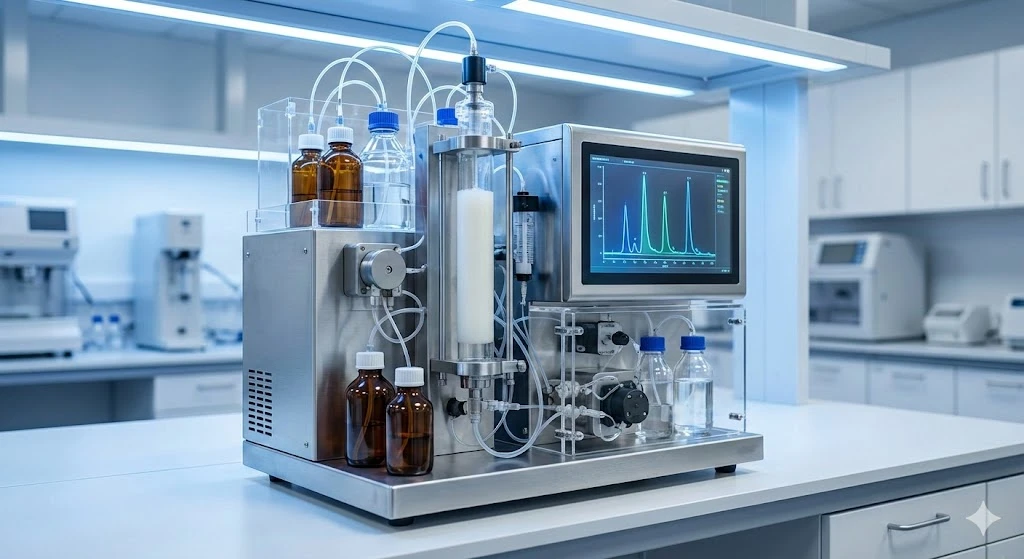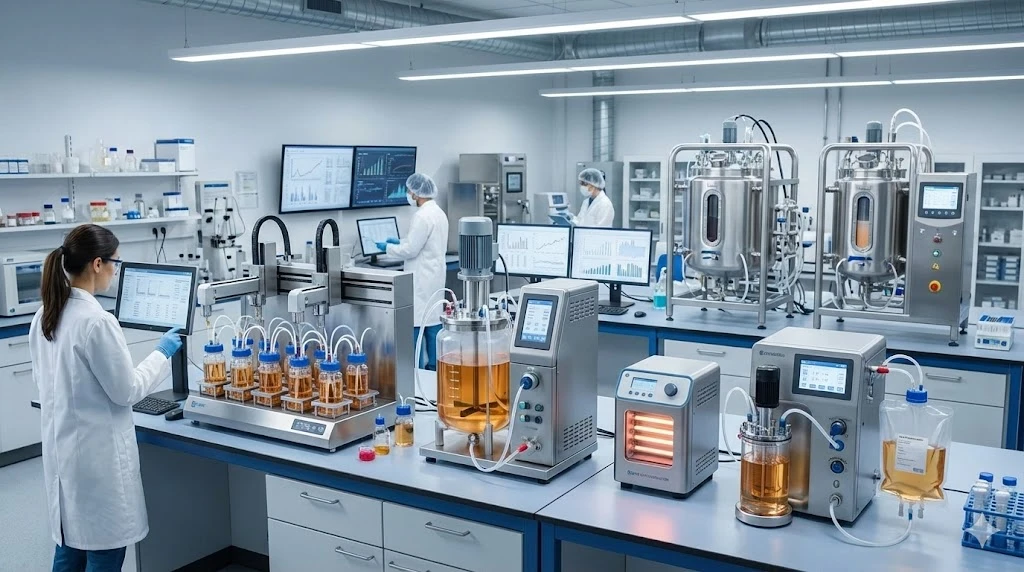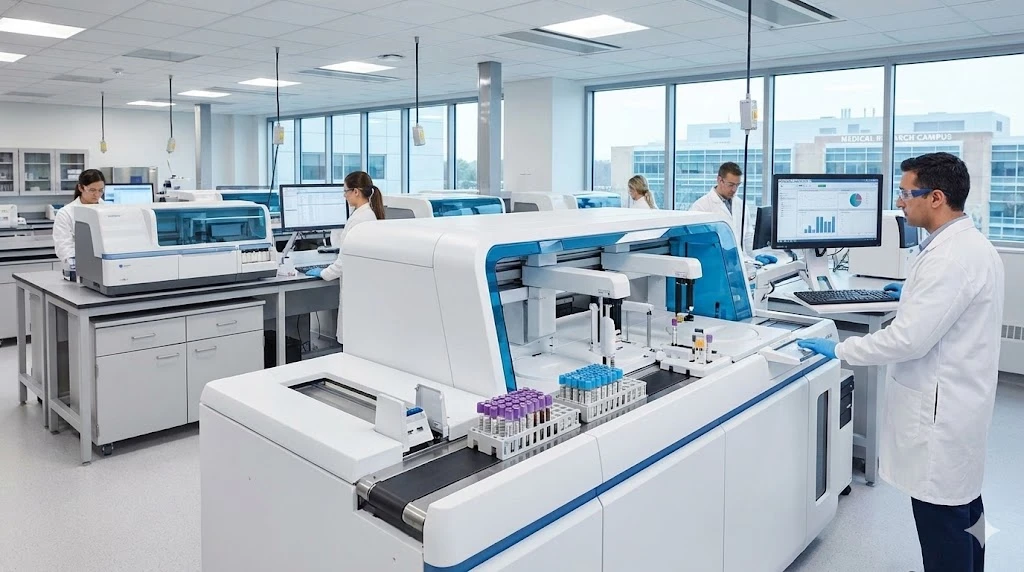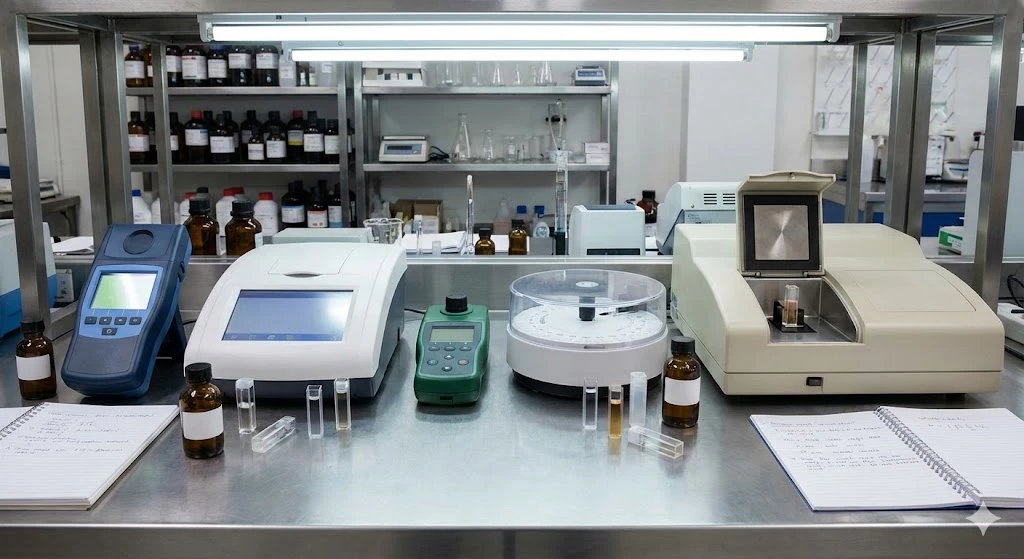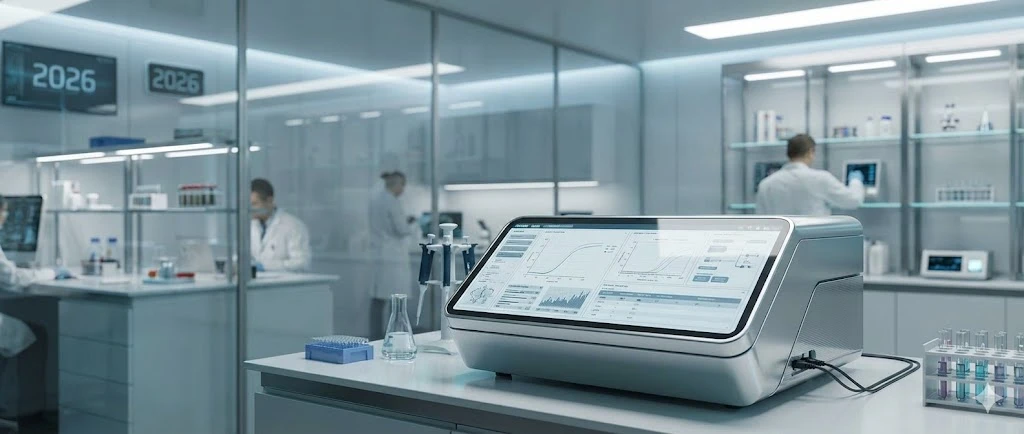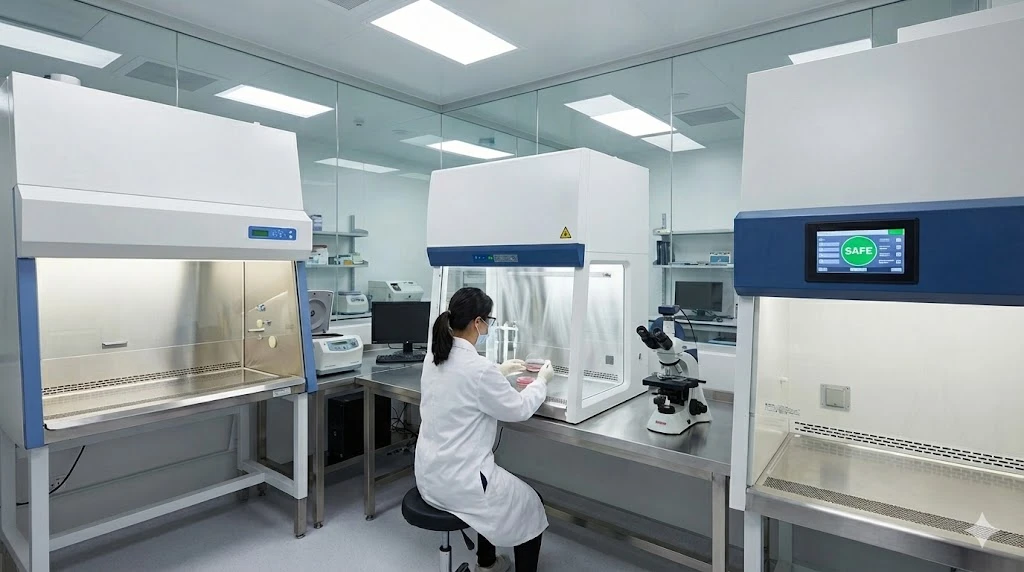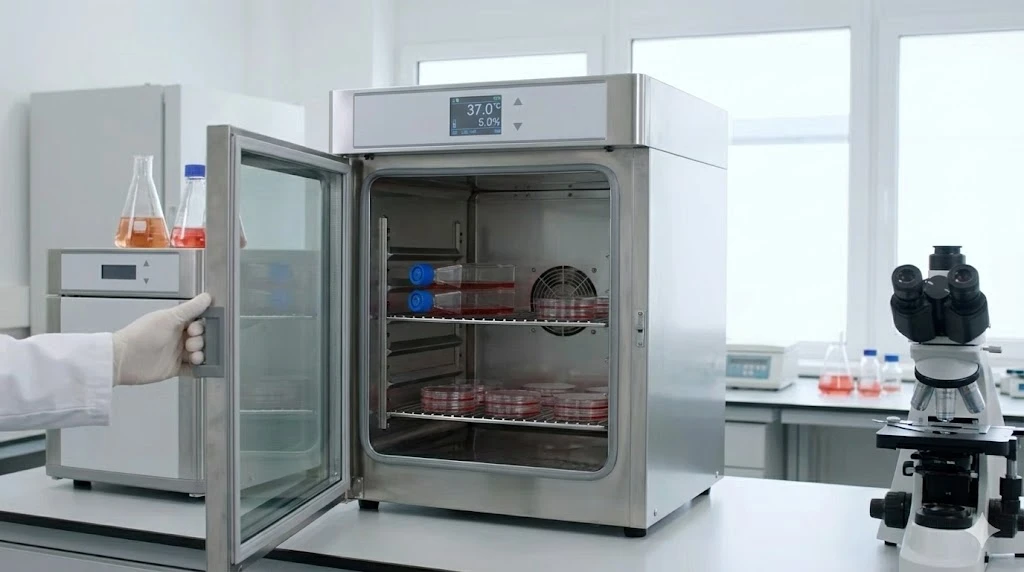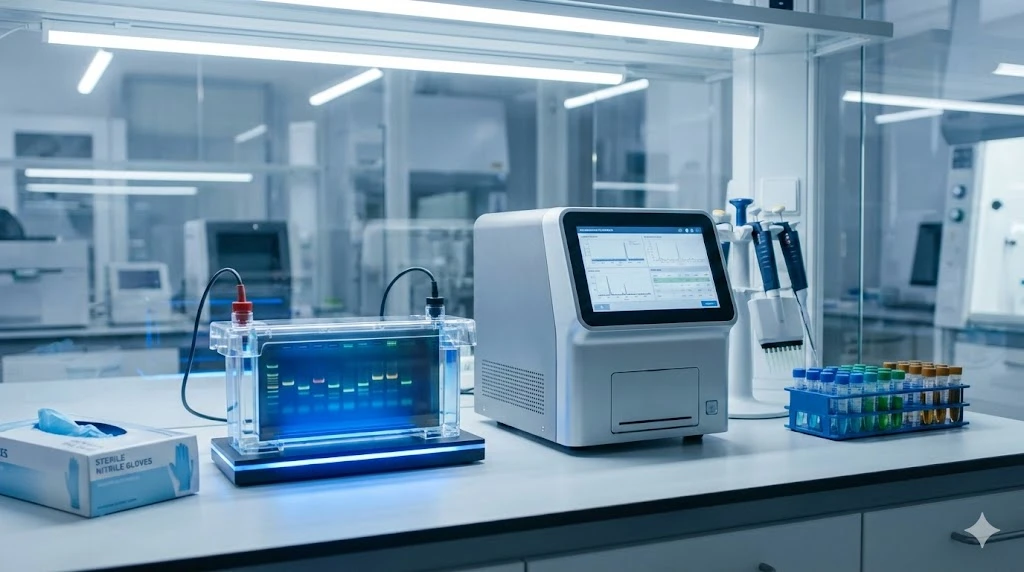Advanced Metabolomics: Revolutionizing Research and Precision Medicine
ImageFX (2025) In the intricate world of biological research, understanding the smallest components can lead to the biggest breakthroughs. Metabolomics, the large-scale study of metabolites within biological systems like biofluids, tissues, or entire organisms, offers a unique window into cellular health and disease. At its core lies the metabolome, the complete collection of these small, biologically active molecules (typically under 1000 Da), encompassing everything from essential metabolic factors like glucose and cholesterol to hormones and growth factors. These metabolites are the ultimate products of cellular machinery, acting as direct indicators of physiological state and disease progression, bridging the gap between an organism's genetic blueprint and its observable characteristics (phenotype). The potential of metabolomics is vast and transformative. It holds the key to identifying novel biomarkers for early disease detection, unraveling complex disease mechanisms, pinpointing new therapeutic targets, and much more. However, the sheer diversity and dynamic ranges of these thousands of chemically distinct analytes present significant analytical challenges, demanding sophisticated technological solutions to achieve comprehensive, accurate, and reliable results. The inherent complexity of the metabolome — with its vast number of diverse compounds, each with unique chemical properties and concentrations — necessitates powerful analytical tools. Mass Spectrometry (MS) has emerged as the cornerstone technology, proving exceptionally effective in measuring a wide array of molecules from various sample types and backgrounds. Recent innovations in MS technology are specifically designed to maximize accuracy and resolution without compromising the depth of analysis, while also handling the high throughput and immense data complexity characteristic of modern pharmaceutical research and beyond. Leading MS techniques crucial to metabolomics include: LC-MS/MS (Liquid Chromatography-Tandem Mass Spectrometry): Ideal for separating and identifying non-volatile and semi-volatile compounds. GC-MS (Gas Chromatography-Mass Spectrometry): Best suited for volatile and semi-volatile compounds after appropriate derivatization. MALDI Imaging (Matrix-Assisted Laser Desorption/Ionization Imaging): A groundbreaking technique for spatial analysis of metabolites directly within tissues. These advanced platforms are engineered to streamline workflows, enhance data capture, and provide deeper insights into biological systems. Several industry leaders are at the forefront of developing cutting-edge instruments that push the boundaries of metabolomics research: SCIEX offers advanced instruments like the X500 QTOF system, specifically tailored for routine metabolomics applications. Their sophisticated operating systems and software components play a critical role in simplifying complex upstream interfaces, managing high-throughput sample demands, and handling diverse data capture techniques. This integration allows researchers to extract a greater wealth of information at the instrument detection stage. When combined with SCIEX's SWATH Data Independent Acquisition and other robust data processing solutions, the platform enables comprehensive identification and precise quantitation of the vast majority of compounds within a given sample. SWATH's capability for high-resolution, accurate detection in complex samples has set a new standard across metabolomics and other research fields. Shimadzu adopts a holistic approach to metabolomics research, leveraging both their highly refined LC-MS/MS and GC-MS instrumentation. Their primary objective is to cover the entire spectrum of metabolites, from high molecular weight non-volatile peptides to very small volatile compounds. LCMS-8050/8060 (LC-MS/MS): These systems deliver accurate and rapid MS data production and analysis through advanced liquid chromatography and triple quadrupole instrumentation. Integration with Shimadzu's Smart MRM (Multiple Reaction Monitoring) measurement methods and comprehensive metabolic databases facilitates precise compound identification and characterization across a wide array of biological backgrounds. GCMS-TQ8040/8050 (GC-MS/MS): Combining several "smart features" designed to streamline analysis, user control, and throughput, these GC systems are coupled with triple quadrupole MS instrumentation and Smart MRM processing to quickly generate meaningful data from even the most complex samples. Thermo Fisher Scientific champions Orbitrap technology for untargeted or "open" metabolomics approaches, which aim to capture information across the broadest possible collection of compounds. The Orbitrap's reputation for ultra-high-resolution performance and its ability to handle high-speed analyses make it ideal for comprehensive metabolome profiling. Key features include: HRAM (High-Resolution Accurate Mass) Performance: Built into instruments specifically designed for metabolomics applications. Q Exactive HF Hybrid Quadrupole-Orbitrap: This instrument exemplifies Thermo's commitment, combining a state-of-the-art segmented quadrupole for high-performance precursor ion selection with an HRAM ultra-high-field Orbitrap mass analyzer. This synergy delivers an unparalleled combination of scan speed, resolving power, mass accuracy, spectral quality, and sensitivity, crucial for deep metabolomic insights. Bruker has pioneered advanced solutions in MS-based tissue imaging, with MALDI Imaging standing out as a particularly promising technology. This technique allows for the direct detection of metabolites within tissue sections, providing invaluable spatial details on compound distribution in real-time or across time-course experiments. It represents a new paradigm in molecular histology, allowing researchers to integrate traditional histology section staining with MALDI Imaging data through advanced software. Immediate applications of Bruker's MALDI Imaging include: Drug Development: Precise localization and concentration of compounds to facilitate drug discovery and development research. Biomarker Discovery: A powerful platform for identifying tissue- or pathology-specific biomarker candidates for further verification. Dynamic Process Visualization: High-resolution imaging of time-lapse processes such as neurodevelopment, disease progression, or cellular events like death and proliferation, bridging biochemical pathways with pathological observations. The ongoing advancements in metabolomics technologies hold profound implications for the promise of precision medicine. By providing a detailed snapshot of an individual's metabolic state, metabolomics can guide personalized diagnoses, treatment strategies, and disease prevention. The continuous development and application of these innovative analytical platforms will undoubtedly accelerate progress in this emerging realm of science, paving the way for a healthier, more personalized future in healthcare. Ready to advance your metabolomics research? Explore cutting-edge instruments and solutions on LabX. Metabolomics research aims to comprehensively identify and quantify all small molecule metabolites within a biological system to understand its physiological state, discover biomarkers, and uncover disease mechanisms. Mass spectrometry techniques like LC-MS/MS, GC-MS, and MALDI Imaging are crucial for metabolomics because they enable the accurate and high-throughput identification and quantification of diverse metabolites, overcoming the challenges posed by the metabolome's complexity. MALDI Imaging provides unique spatial information by directly detecting and mapping metabolites within tissue sections, allowing researchers to visualize the distribution and concentration of compounds in specific anatomical locations, which is vital for understanding disease progression and drug distribution. Advanced metabolomics supports precision medicine by offering detailed metabolic profiles that can inform personalized diagnoses, guide tailored treatment plans, and facilitate the discovery of individual-specific biomarkers, ultimately leading to more effective and targeted healthcare interventions.

Navigating Complexity: Advanced Mass Spectrometry Techniques
Innovating Metabolomics: Leading Instrument Solutions
SCIEX: Comprehensive Identification and Quantitation
Shimadzu: Spanning the Metabolome Spectrum
Thermo Fisher Scientific: Ultra-High Resolution with Orbitrap
Bruker: Revolutionizing Spatial Metabolomics with MALDI Imaging
The Future Landscape: Metabolomics and Precision Medicine
Frequently Asked Questions About Metabolomics Technologies
What is the primary goal of metabolomics research?
How do mass spectrometry techniques contribute to metabolomics?
What unique insights does MALDI Imaging offer in metabolomics?
How does advanced metabolomics support precision medicine?

